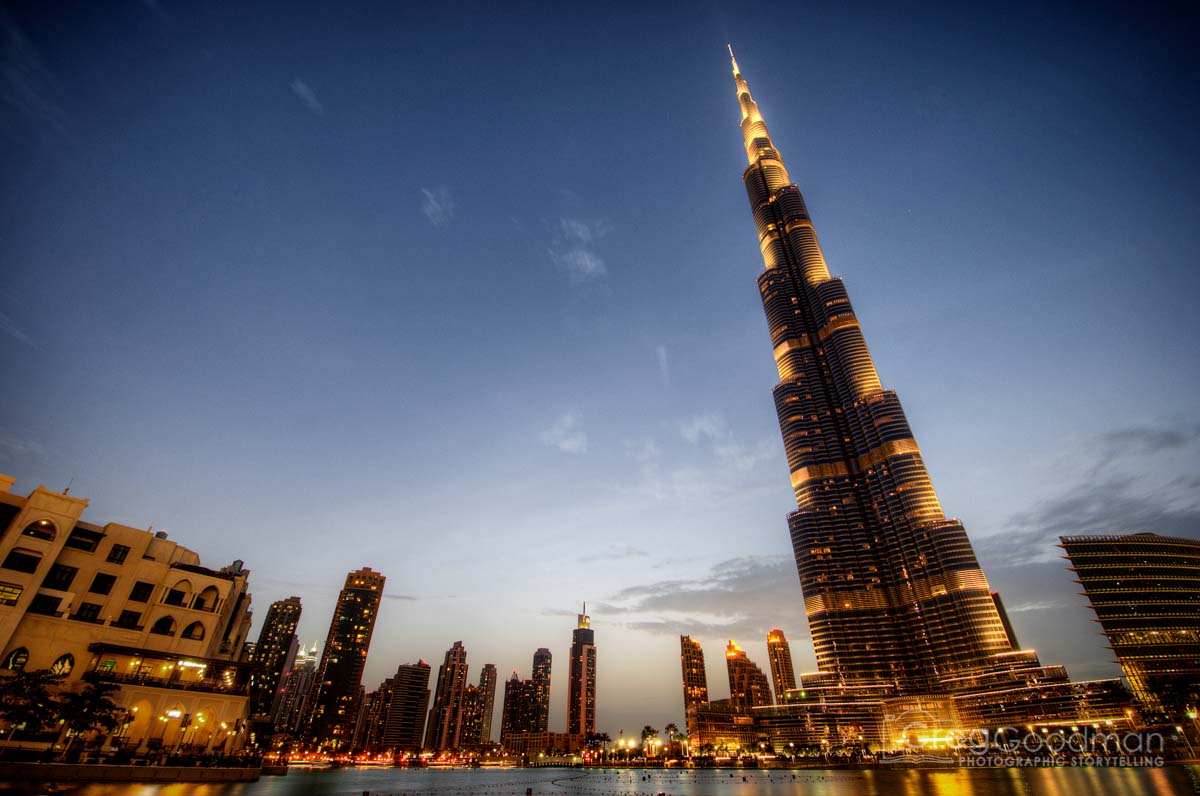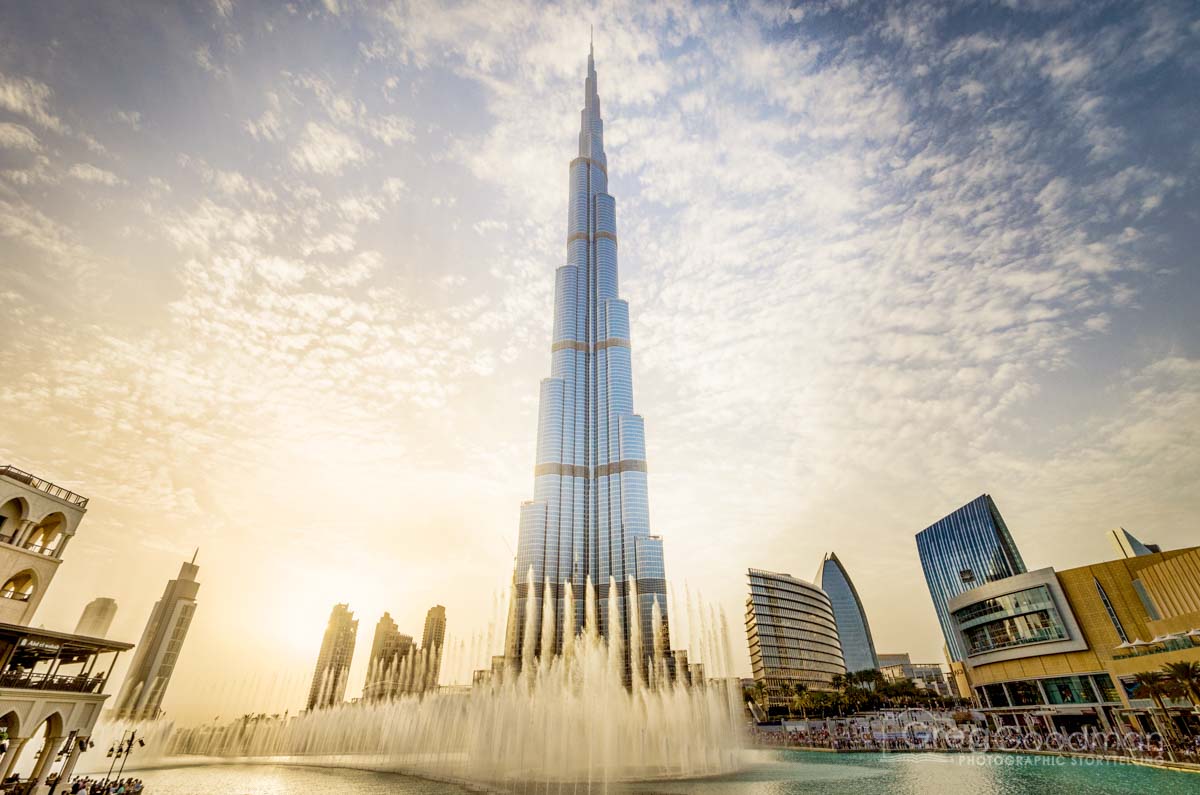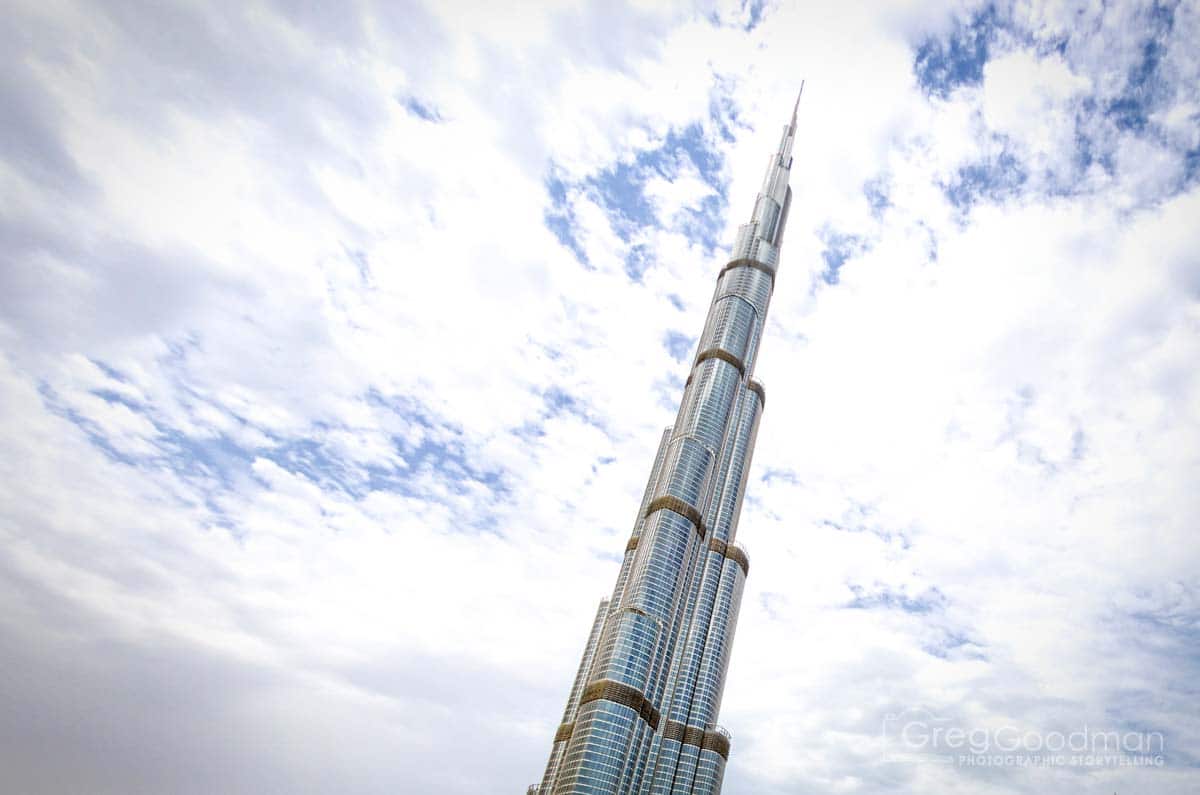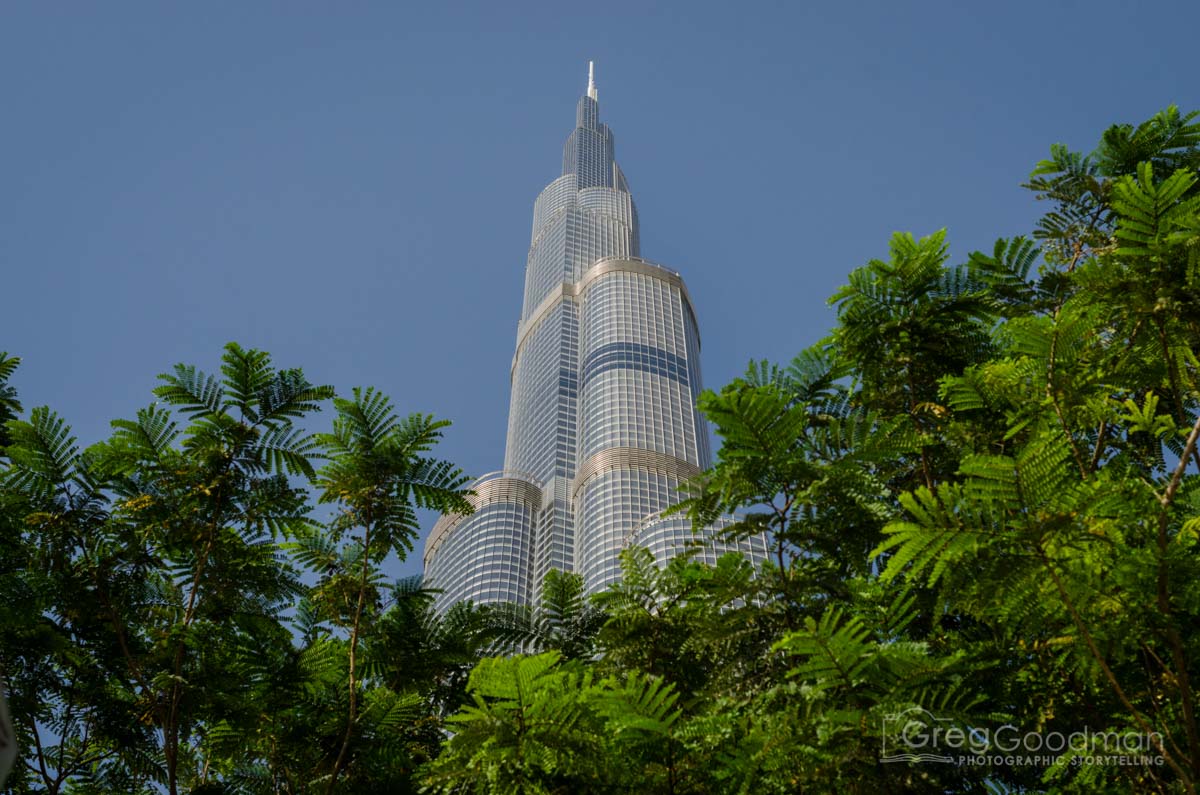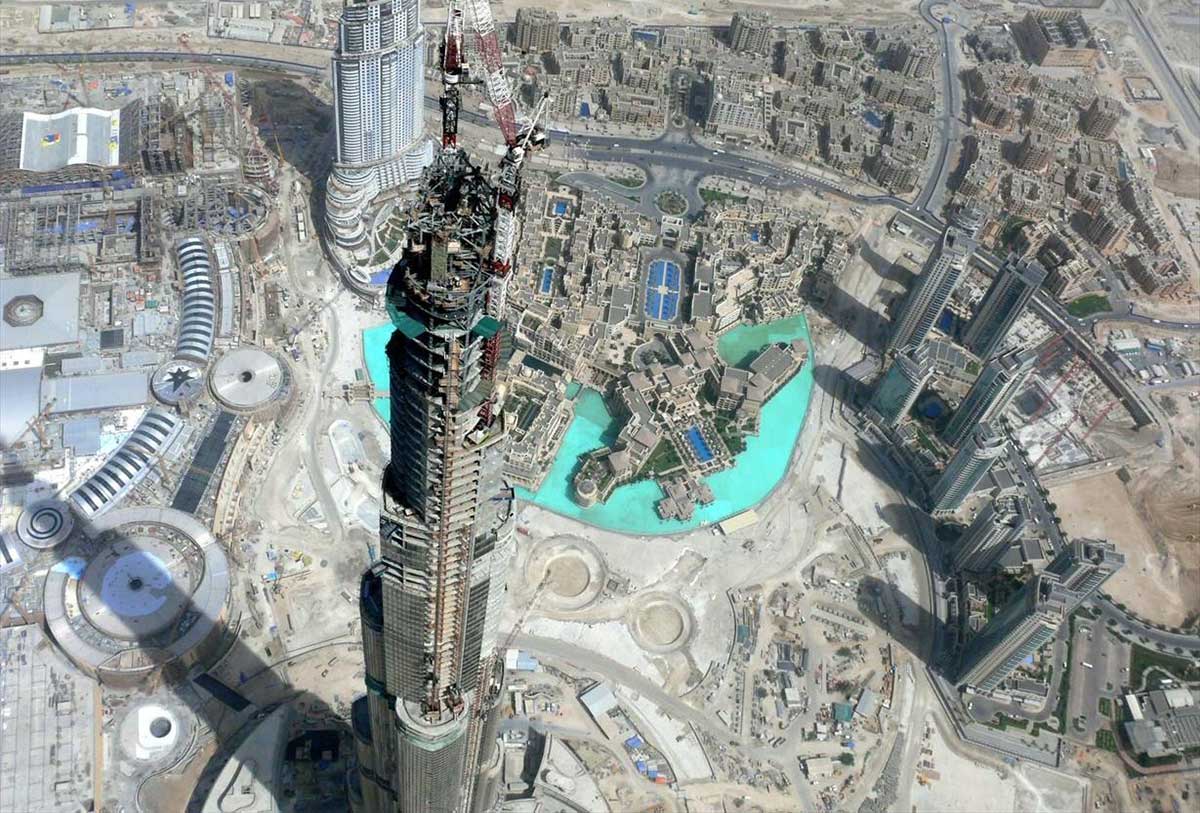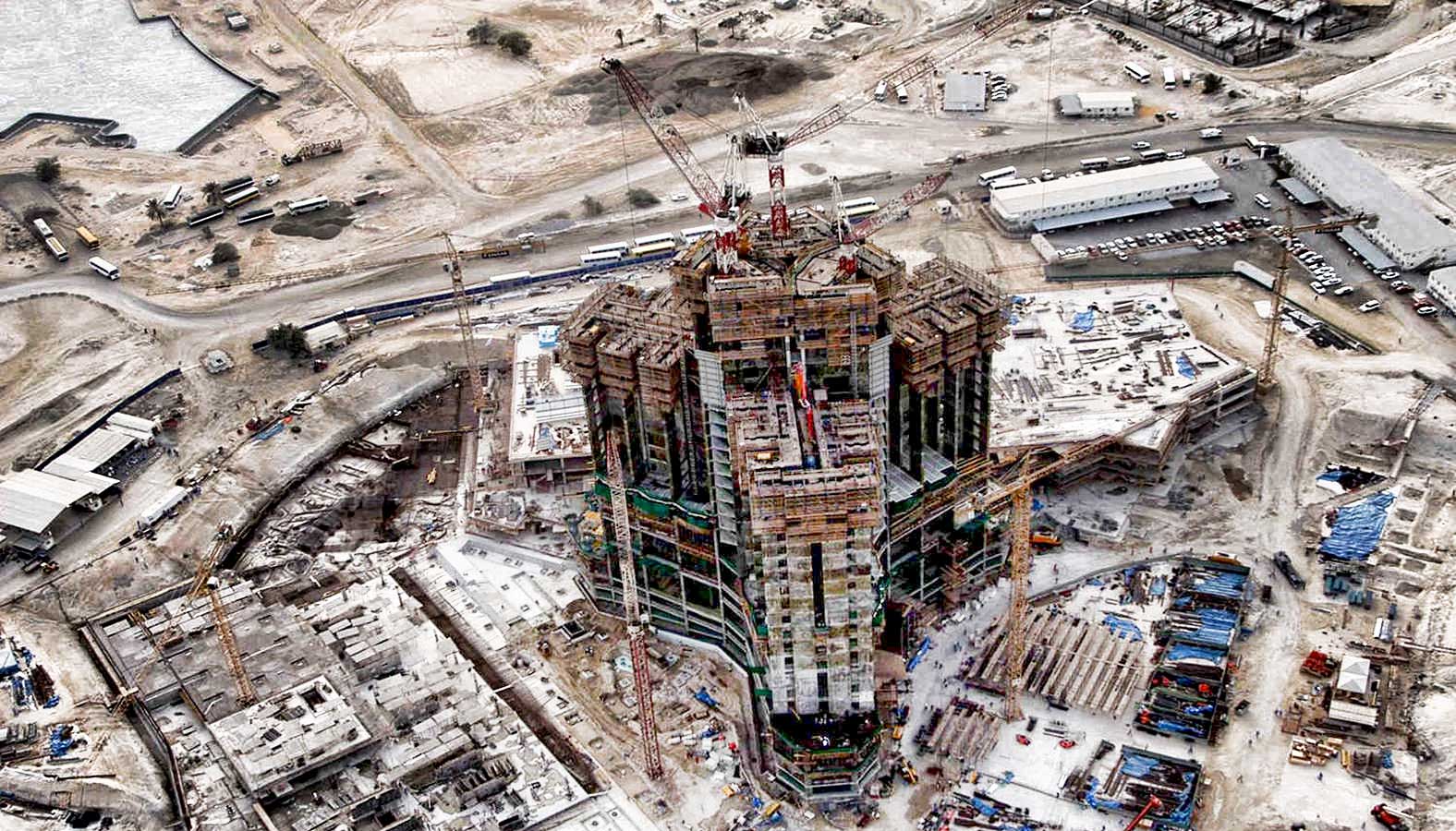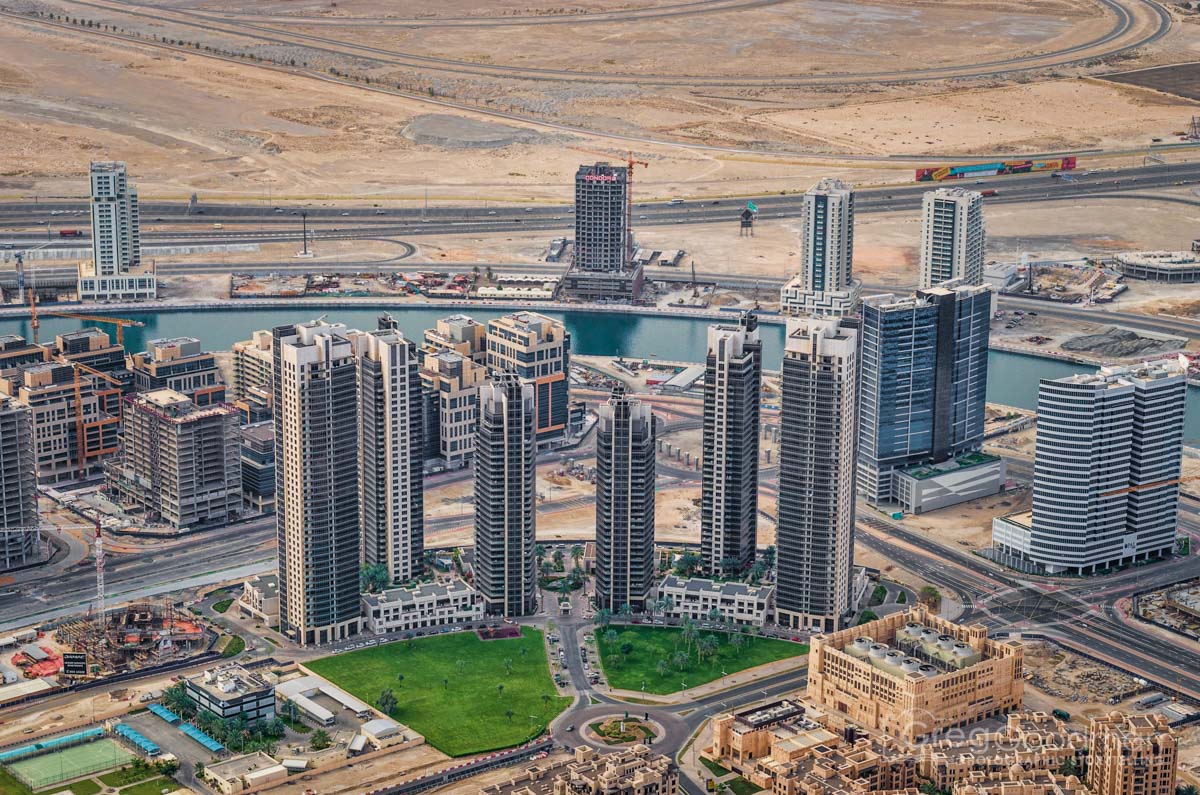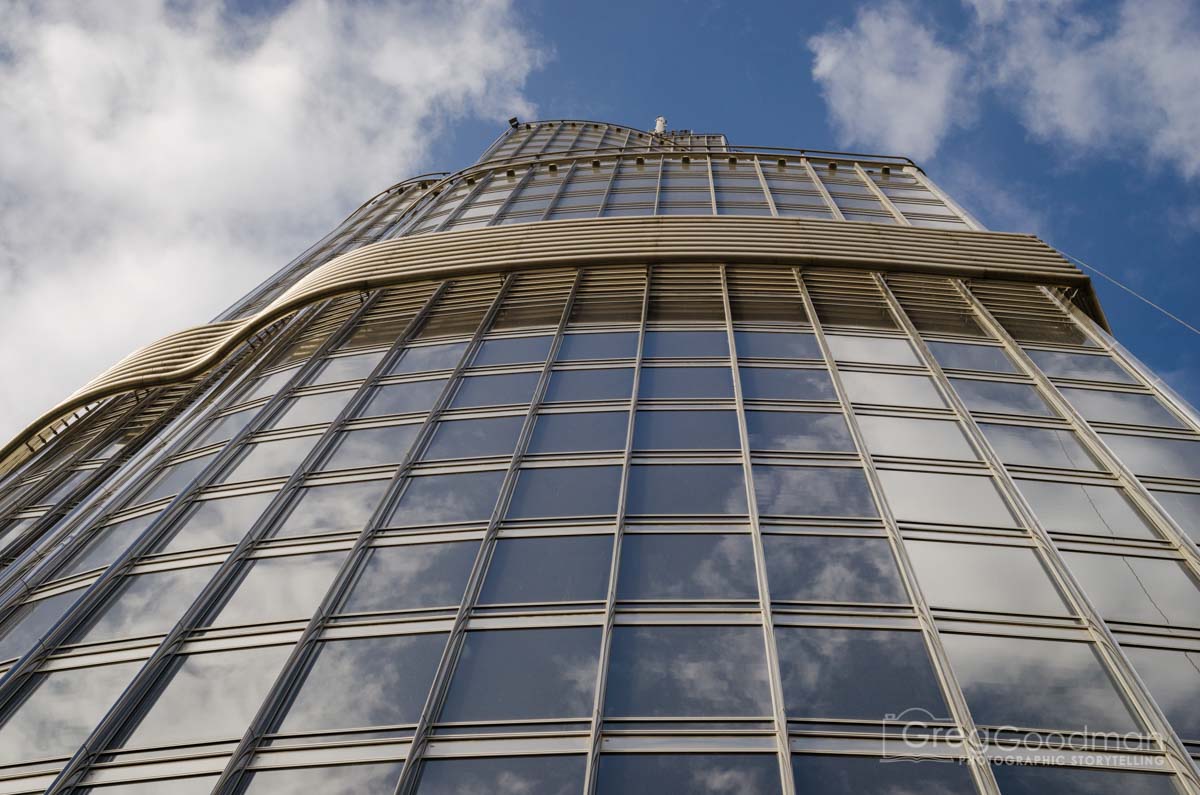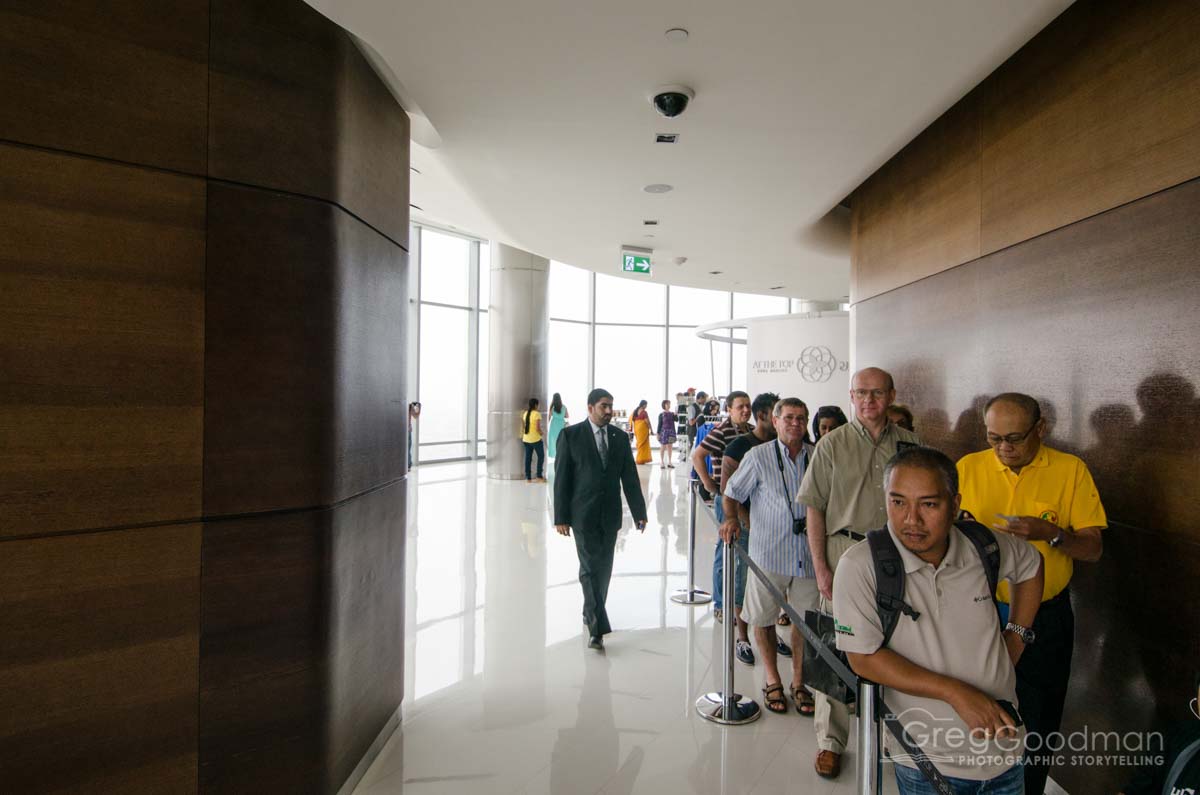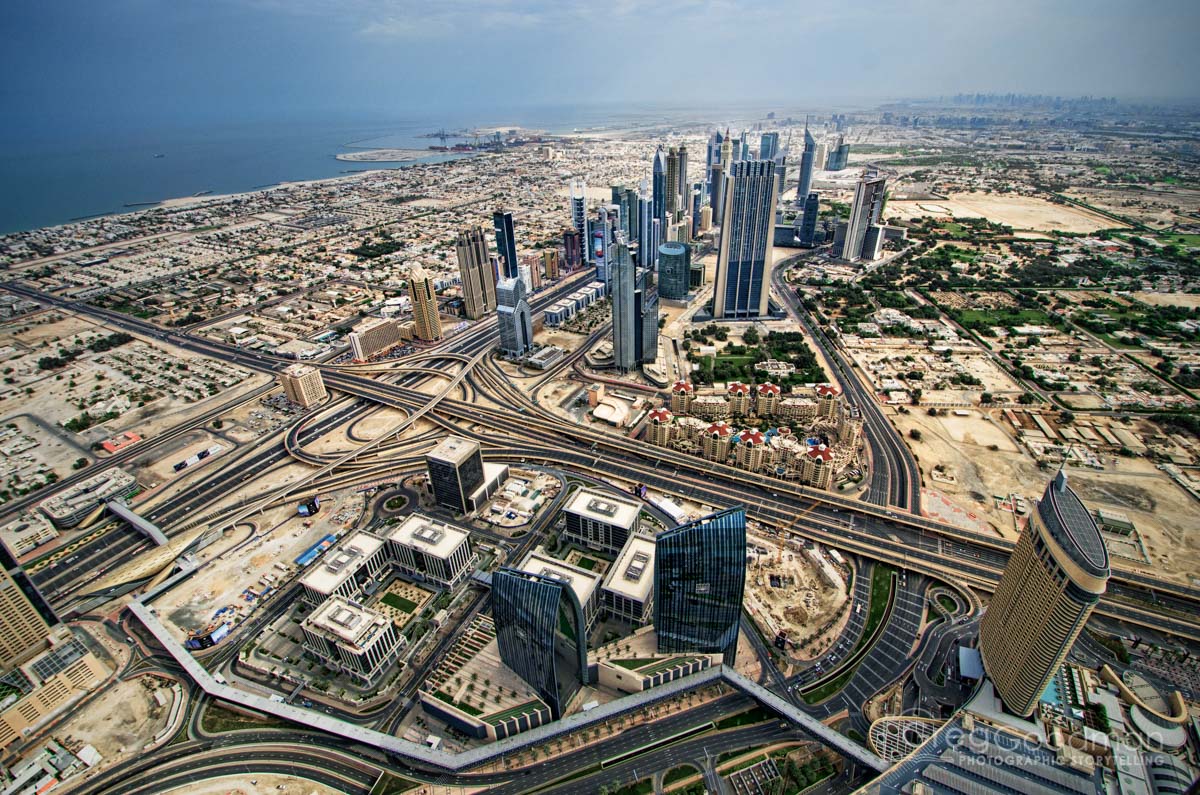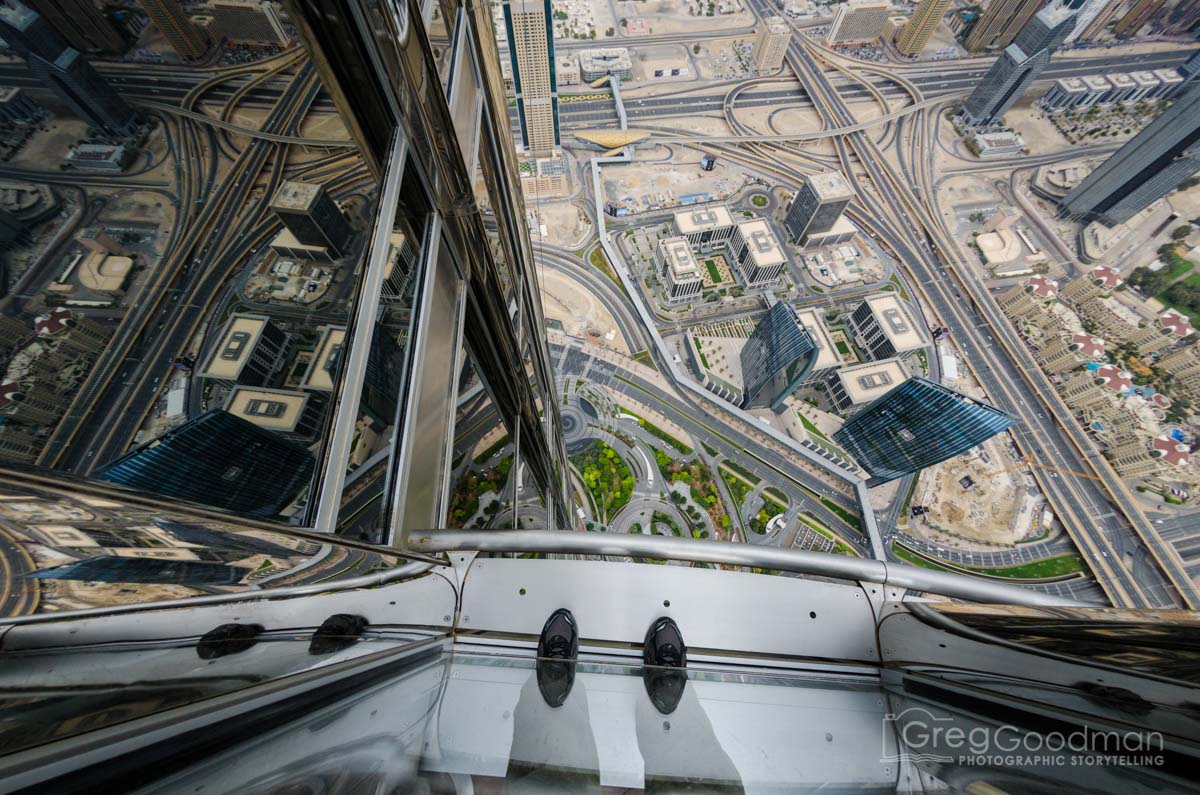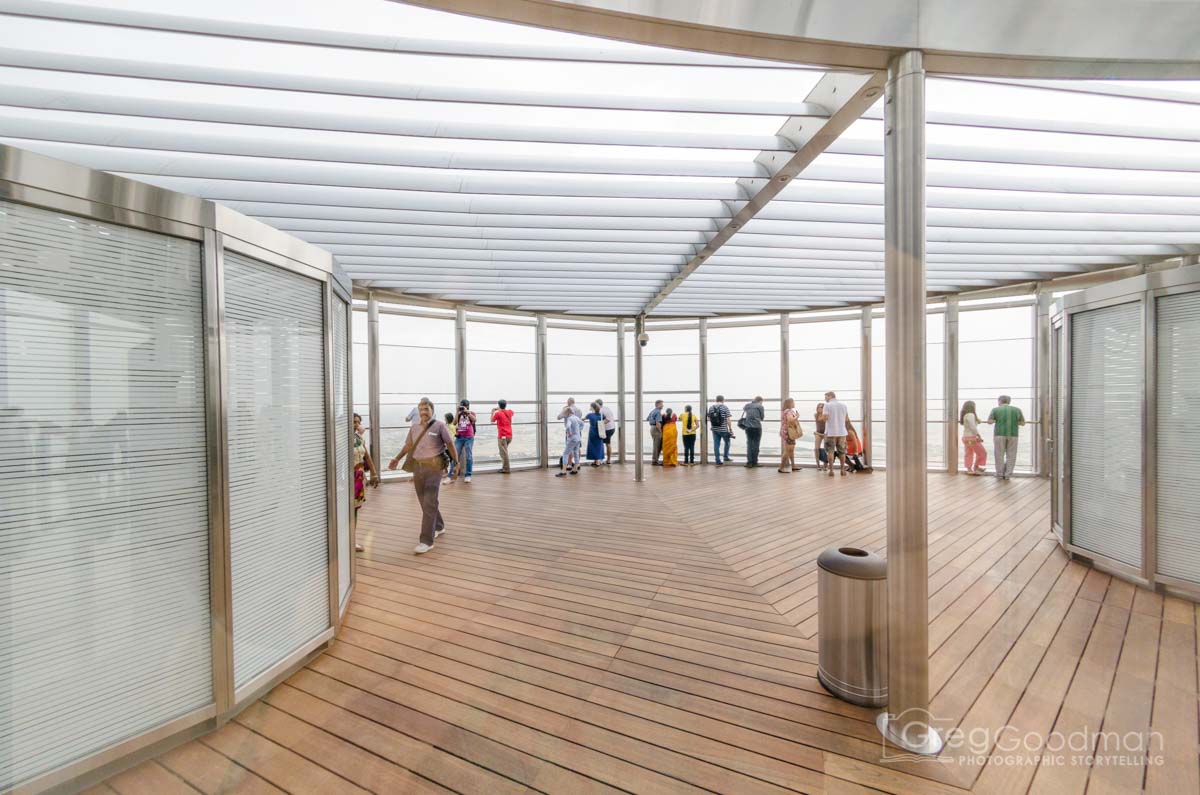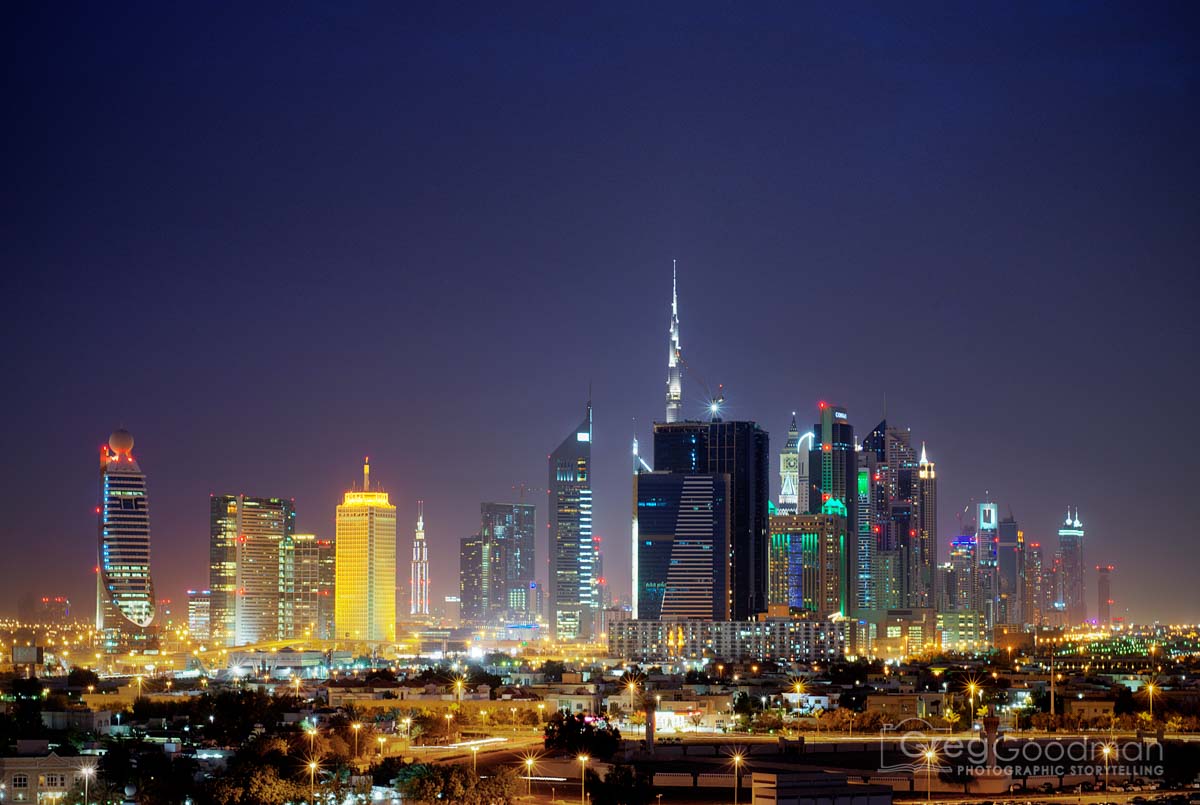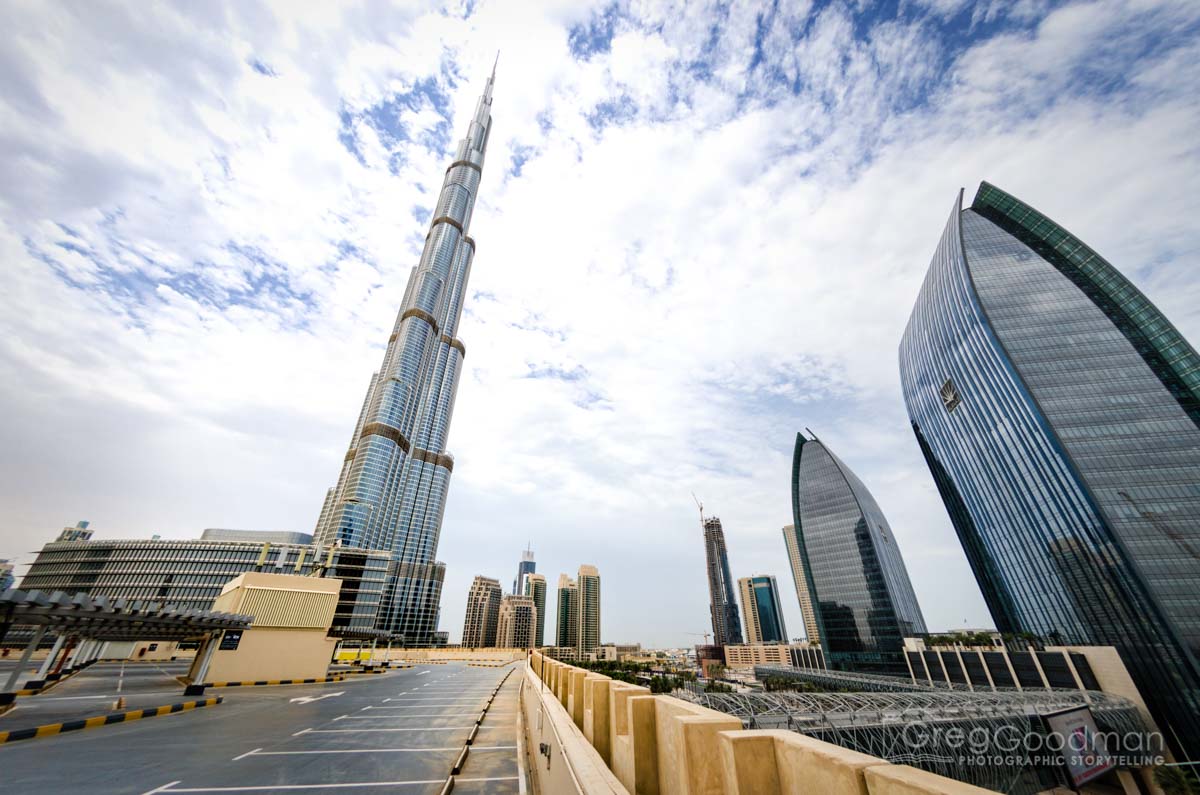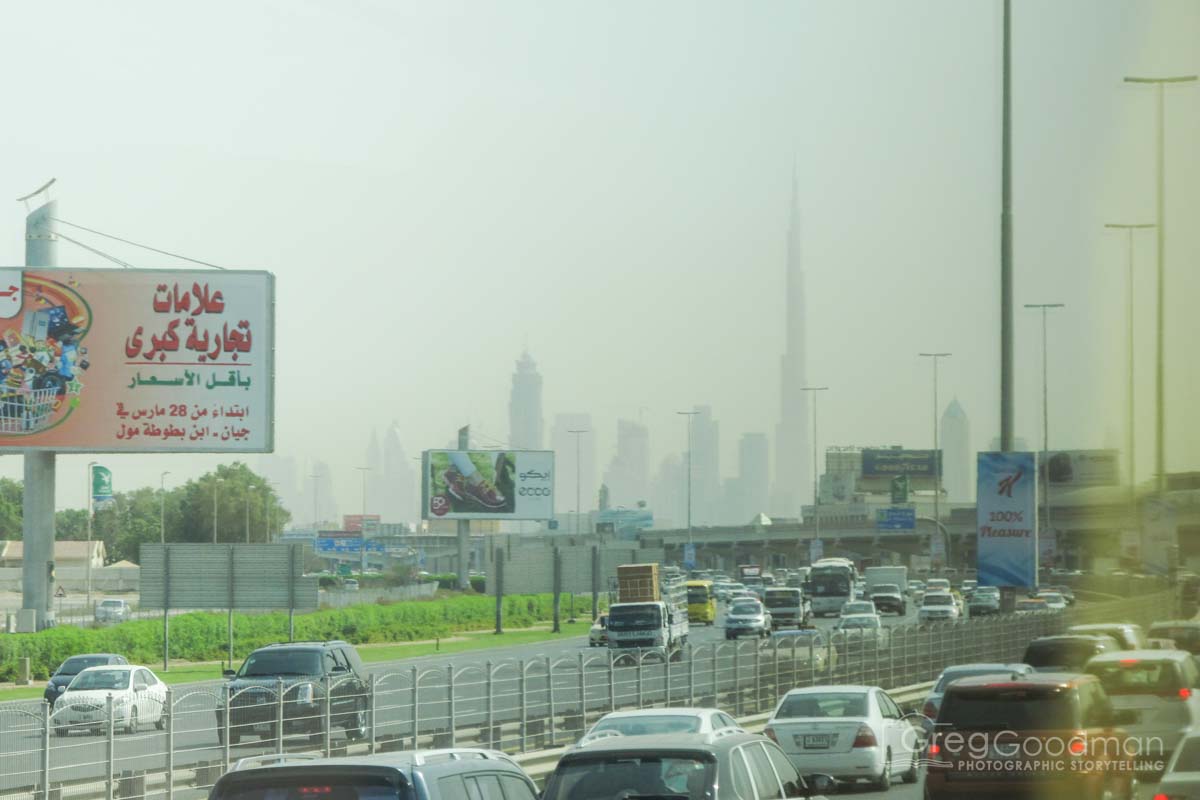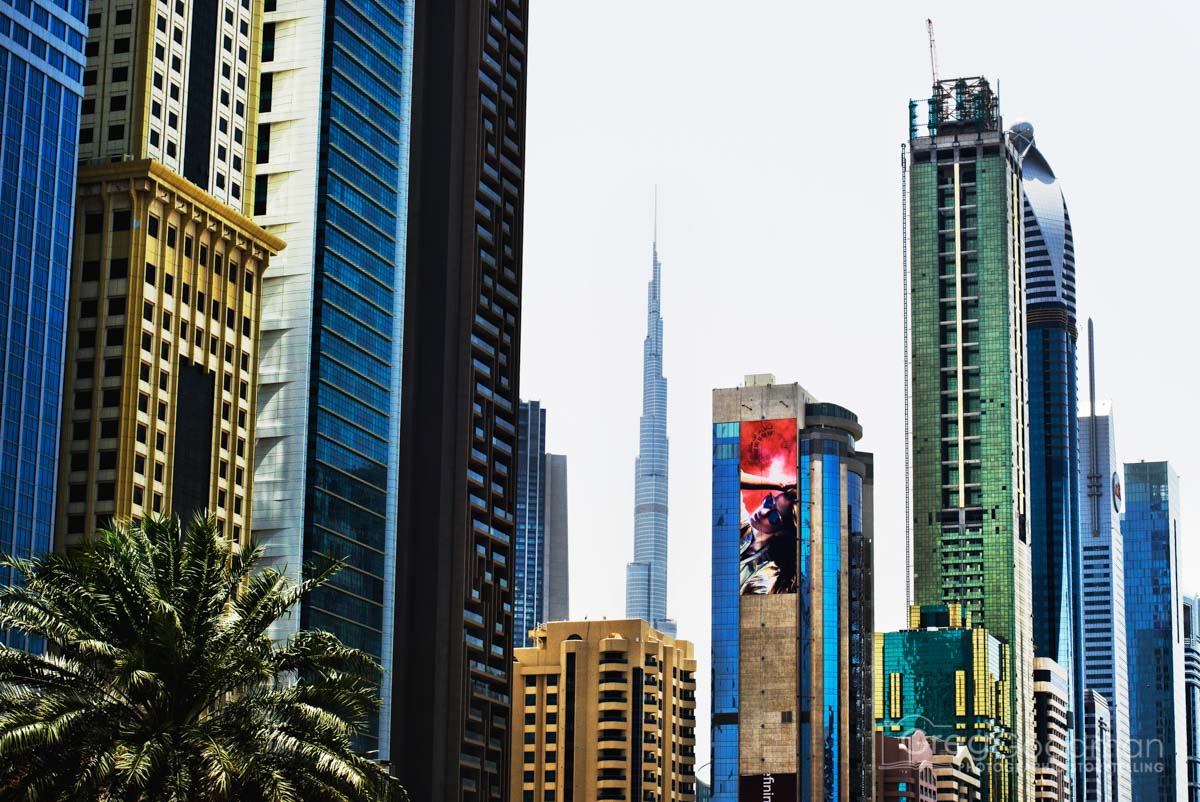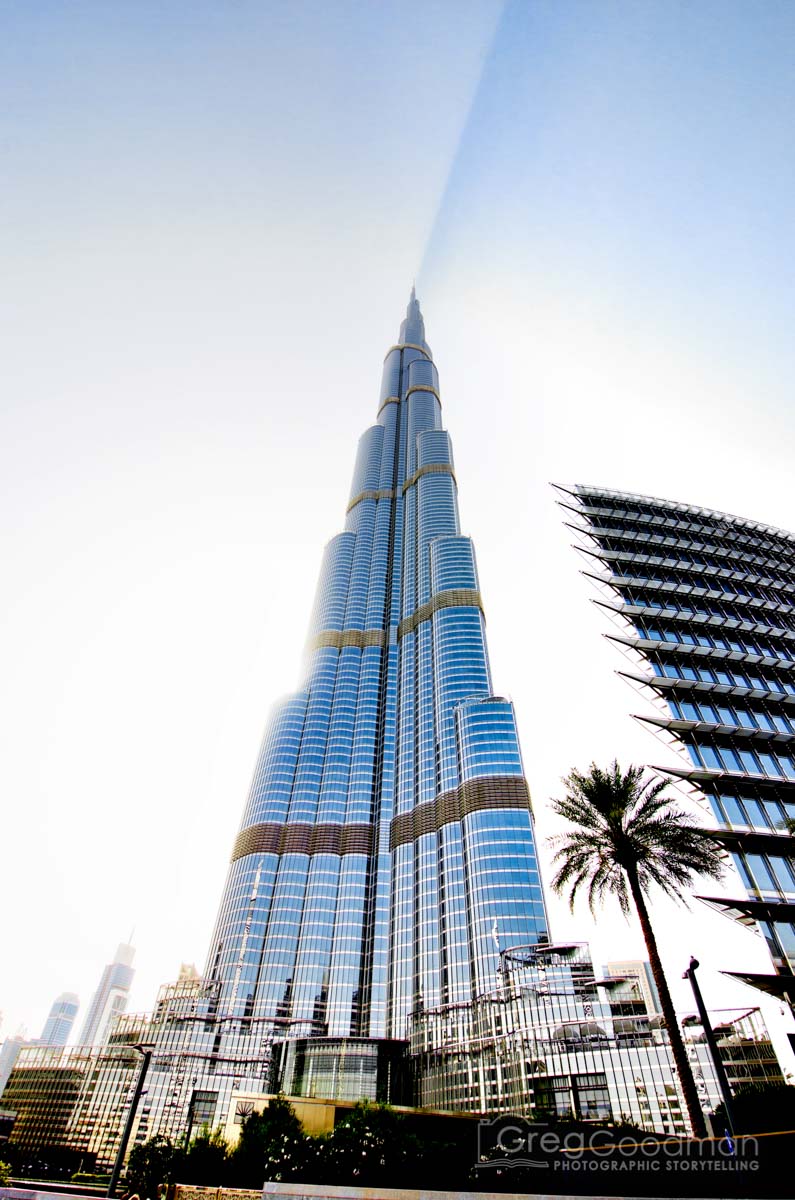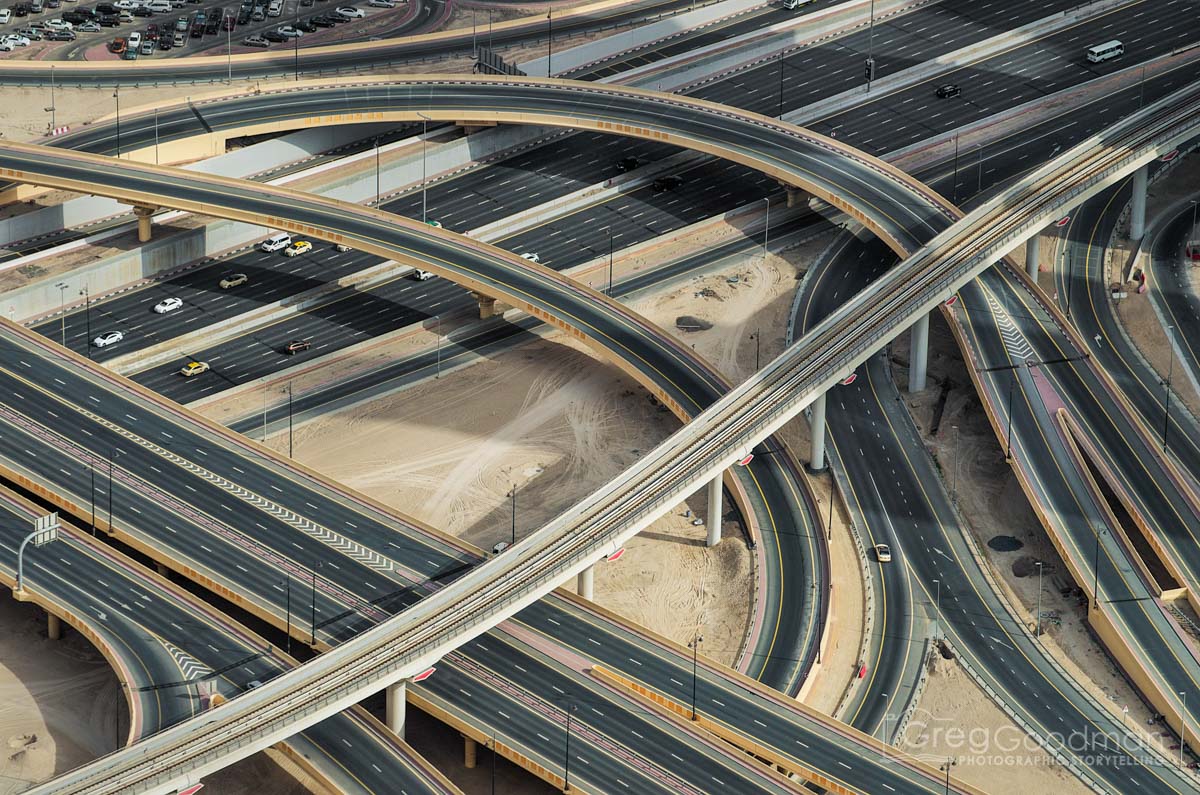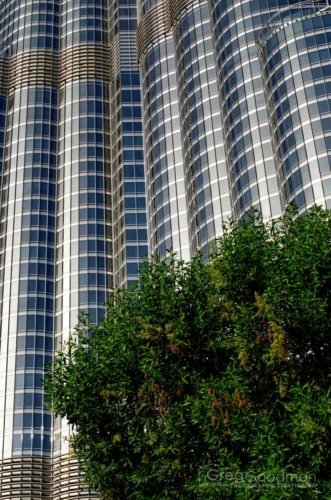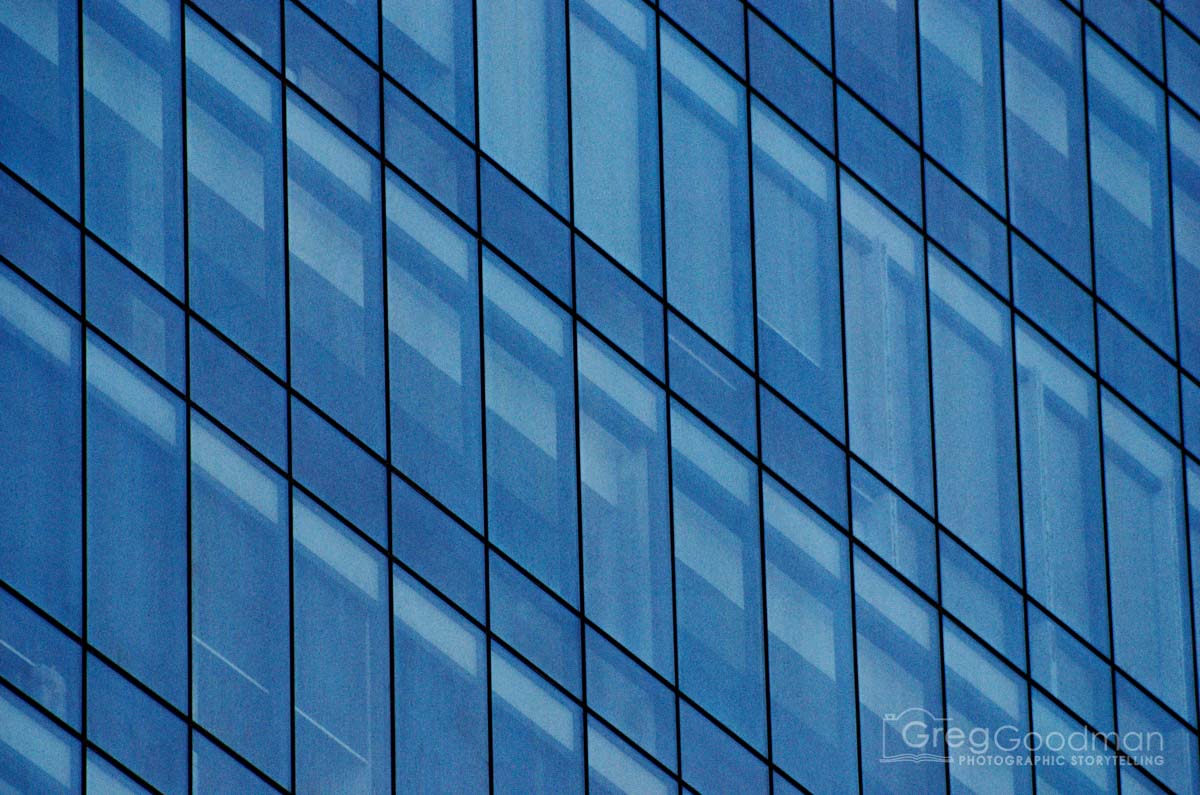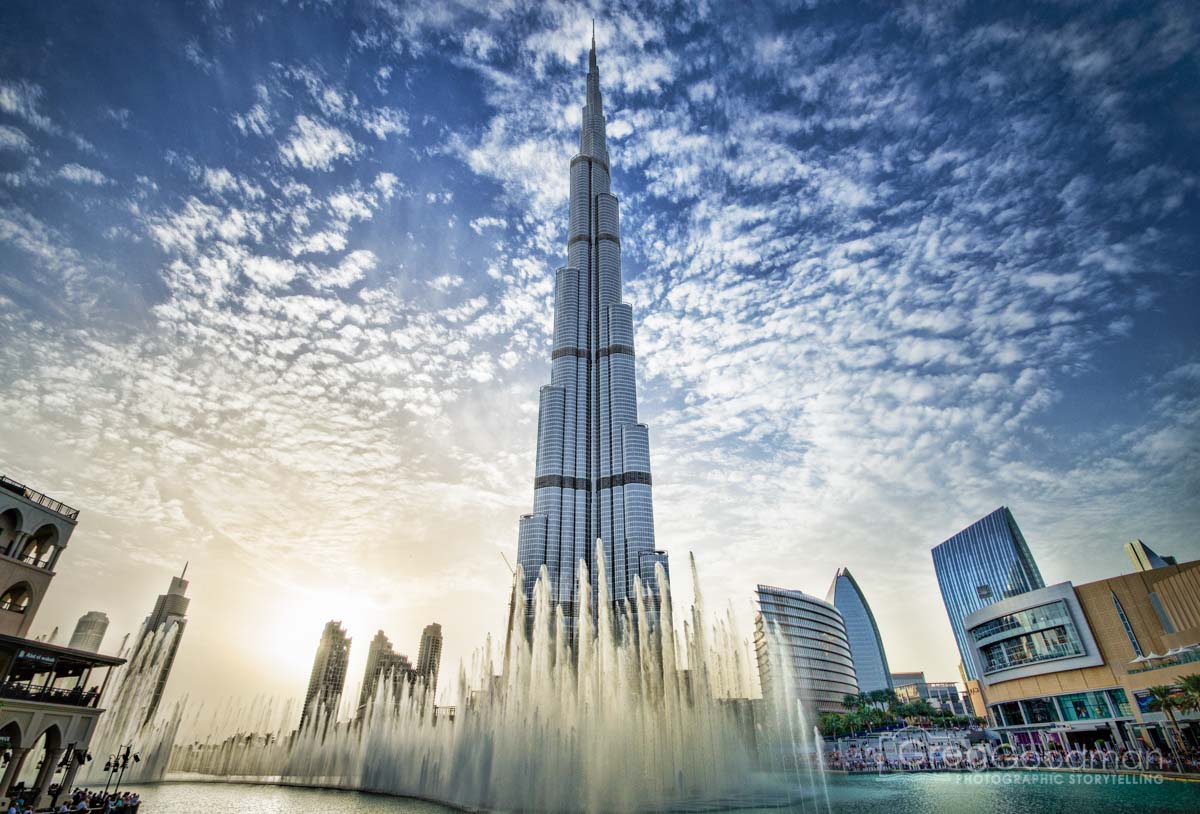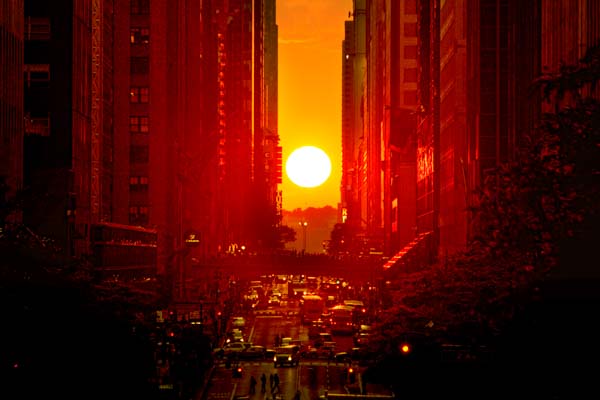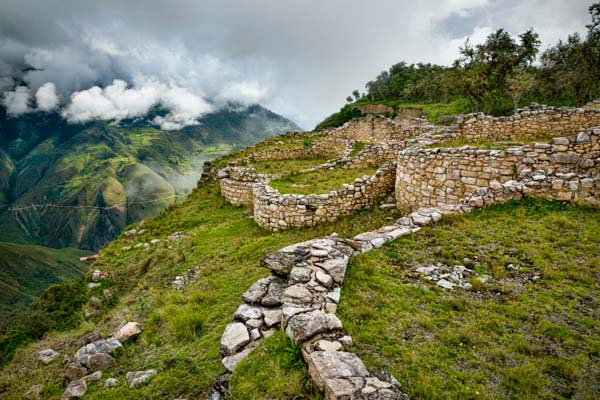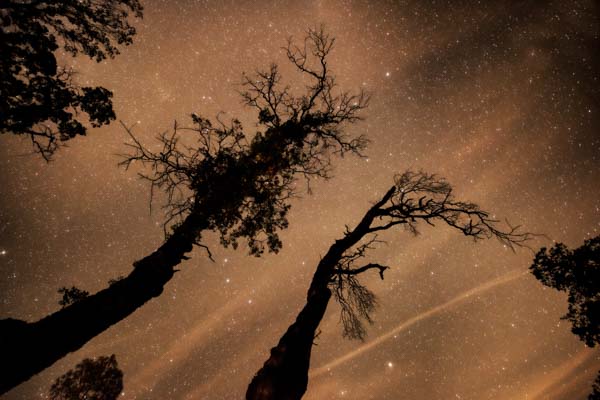Since time immemorial, humans have strived to reach the heavens with epic feats of engineering and architecture.
The Great Pyramid of Giza, Cologne Cathedral, the Eiffel Tower, the Empire State Building … each of these once called itself the world’s tallest structure.
Today, that honor belongs to Dubai’s Burj Khalifa – a 160 story testament to human accomplishment, ingenuity and resolve.
Bursting out of the desert like an oasis of glass and steel, Dubai’s Burj Khalifa stretches 2,722 feet (830 meters) above the city’s skyline. That’s nearly half a mile!
Now, let’s journey to Dubai and explore the story behind all 160 stories.
A Brief History of the Burj Khalifa in Dubai
After discovering oil in 1966, Dubai’s economy became centralized around the production and exportation of this valuable fossil fuel. That began to shift in the mid-1990s — after the conclusion of the Persian Gulf War — when a wave of international foreign trading communities and corporations moved their businesses to Dubai.
The income provided by this shift in demographics — as well as a global increase in oil prices — allowed Dubai to supplement its oil-based economy with one of finance, service and tourism. This wave of prosperity also inspired architects from around the world to create the iconic and awe-inspiring Dubai skyline.
By the early 2000s, the city already had its share of breathtaking architectural achievements, including hundreds of manmade islands, the world’s tallest Hotel (Burj Al Arab) and an indoor ski slope. However, the government wanted something more. According to Jacqui Josephson, a tourism and VIP delegations executive at Nakheel Properties,
“Sheikh Mohammed bin Rashid Al Maktoum wanted to put Dubai on the map with something really sensational.” ¹
The Burj Khalifa certainly met those requirements! When it opened in 2010, the mega-tower instantly claimed handfulls of “world’s tallest” awards, including the world’s tallest building and the world’s highest nightclub.
Constructing the Burj Khalifa
Construction of Dubai’s Burj Khalifa took nearly 6 years (2095 days, to be exact). Work began on January 6, 2004, and the exterior was officially completed on October 1, 2009.
Stunningly designed by the Chicago firm of Skidmore, Owings and Merrell, the Burj Khalifa is inspired by desert flowers and an unrealized Frank Lloyd Wright architectural project.
Fun Facts About the Burj Khalifa’s Construction
- In total, more than 22 million man-hours were spent building the tower
- The frame of the Burj Khalifa is made of 110,000 tons of concrete (which weighs as much as 110,000 elephants) and 55,000 tons of steel rebar
- If all that rebar was laid down end-to-end, it would stretch 1/4 of the way around the globe
- 26,000 glass panels were used to create the exterior of the building
- Construction of the Burj Khalifa cost $1.5 billion … and that’s not counting the surrounding “Downtown Dubai” development.
Controversy Surrounding the Burj Khalifa’s Construction
When it opened, the building was heralded as a marvel of modern architecture and a new wonder of the world. However, many human rights groups protested the Burj Khalifa, claiming that workers were mistreated and vastly underpaid. According to Migrant-Rights.org,
“The mainly south-Asian migrant workers have paid a high price for this ambitious project. Those workers toiled 12 hour a day, 6 days a week for pay as little as $4 per day.
The workers continuously protested against the poor working conditions and low pay, despite the fact that strikes and unionizing are illegal according to UAE law. In 2004, thousands of workers protested before the Ministry of Labour, only to be dispersed by police and threatened with mass deportations.”
What’s It Like Visiting the Burj Khalifa
Growing up in New York City, I spent my childhood surrounded by tall buildings. As a result, it takes a lot to impress me. The Burj Khalifa took my breath away!
From the minute you enter Dubai, the Burj Khalifa is visible everywhere. It towers above the skyline and can be spotted from almost every window, rooftop, subway line, highway and river.
Upon arriving in Downtown Dubai and finding yourself face to face with this monumental colossus, all that’s left to do is crane your neck as far back as possible, look up and stare in awe.
‘At the Top’ — an Epic Observation Deck
Breathtaking. Epic. Endless. Unimaginable. These are just some of the adjectives used to describe your view from ‘At The Top’ – the observation deck and lounge on the 148th floor of the Burj Khalifa.
With 360 degree panoramic views, you can gaze out on the ultra-modern architecture of Dubai, the crystal-blue waters of the Persian Gulf, the vast colorless desert and the incredible divide between the city’s haves and have-nots.
A visit to ‘At the Top’ isn’t cheap … but it’s worth it. Prices begin at around $50 and go all the way up to $150 if you want access to the VIP ‘At the Top SKY’ experience.
The best time to visit ‘At The Top’ is sunset, when you can actually watch the sun dip below the horizon twice – once from a low floor, then again from the top.
Best Places to Photograph the Burj Khalifa
The most obvious place to photograph the Burj Khalifa is from Downtown Dubai – located directly underneath the skyscraper. However, to get a truly unique photo, you have to get a bit of distance between yourself and the tower. Here are a few recommendations:
Photographing the Burj Khalifa’s Energy Field
At any given moment, an estimated 50MVA of electricity is pulsing through the tower. That’s the equivalent of running roughly 500,000 100-watt light bulbs simultaneously. ³ Additionally, the Burj Khalifa’s spire is home to a large array of radio towers, satellites and other electromagnetic fields.
In theory, all this energy is invisible. However, looking through my photographs of the Burj Khalifa, I noticed a shadowy beam cutting through the sky above the tower’s spire. The line was present in images from all sides of the building and appeared to change the color of the sky on either side.
I can only surmise that the camera captured that energy coming into and out of the tower. That said, I would love to hear what you think in the comments below!
Downtown Dubai – home of the Burj Khalifa
Downtown Dubai truly is an oasis, with its carefully manicured paths, air-conditioned walkways, mega mall, indoor souk bazaar and daily fountain shows. According to the official website,
“The Burj Khalifa stands as an anchor to the world’s most prestigious square kilometer – Downtown Dubai — which is also described as ‘The Centre of Now.’ This mixed-use, 500-acre development features world-class assets including commercial, residential, hotel, entertainment, shopping and leisure components set in open green spaces dotted with lakes and other distinct water features.”
True enough! You can easily spend an entire day exploring that square kilometer … which is a good thing, because the area surrounding it is hot, dry and under constant construction.
Fun Facts About the Burj Khalifa
As of 2017, the Burj Khalifa has these claims to fame:
- Tallest building in the world
- Tallest free-standing structure in the world
- Highest occupied floor in the world — 153rd floor at 584.5 m (1,918 ft)
- Highest outdoor observation deck in the world – 148th floor at 555 m (1,821 ft)
- Elevator with the longest travel distance in the world — 504 m (1,654 ft)
- Highest nightclub in the world –144th floor
- Tallest service elevator in the world
- The top of the tower can be seen up to 95 kilometers away
- Much like the Hymenocallis (Spider Lily) flower, the skyscraper’s central core emerges at the top and culminates in a sculpted spire ²
- As a mixed-use tower, the Burj Khalifa has 1.85 million square feet of residential space and 300,000 square feet of office space
- The stairwell has a total of 2,909 steps leading up to the 160th floor … ladders are used to climb any higher
- The common areas of Burj Khalifa all have a bespoke fragrance that was selected from among 18 aromas. The fragrance with the materials in each space for a subtly different experience.
- The water system supplies an average of 946,000 liters of water a day
- To prevent aircraft collisions, the Burj Khalifa is equipped with high-intensity xenon white obstruction lights that flash 40 times per minute
- The building has a maximum occupancy of 35,000 people
- There are 57 elevators in the Burj Khalifa ⁴
EXPLORE SOMEWHERE NEW
BUY A PRINT
All photos on this site are available as limited edition fine art photographic prints. Please get in touch for sizes and rates.


